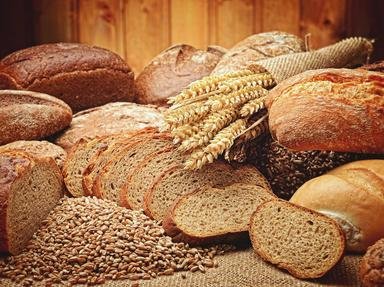Quiz Answer Key and Fun Facts
1. Unlike other breads, sourdough is dependent on wild yeast, coaxed into abundance by judicious feeding. What is the initial name of the mixture of flour and water that you need to culture in order to capture your yeast?
2. What math is used to calculate the ratio of ingredients of sourdough?
3. Sourdough does not need to be kneaded. Leaving the dough alone initially allows it to naturally form gluten strands in a process that translates to 'self digestion'. What is the term for this process?
4. Allowing the dough to sit and the yeast to perform its magic, making the dough puff and rise, is known as?
5. Sourdough needs a receptacle to sit in for the final prove. A common thing is a proving basket. What is the French name of the wicker or rattan basket used for this purpose?
6. To allow for the longest prove in order to develop the flavour, where should you place the dough, once in the proving basket, to have its final rest?
7. What is the name of the holder of a razor blade that is used to score the surface of your loaf?
8. When the loaf is being baked, what is the term used to describe the last push of the yeast to make the dough rise?
9. Your loaf is cooked, a split in the top of the loaf has appeared with one edge curling up. What is this known as?
10. What word is used to describe the look of the inner surface of your loaf?
Source: Author
smpdit
This quiz was reviewed by FunTrivia editor
jmorrow before going online.
Any errors found in FunTrivia content are routinely corrected through our feedback system.
